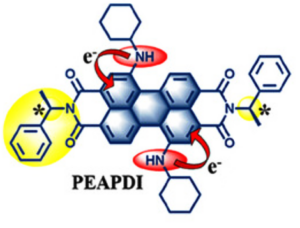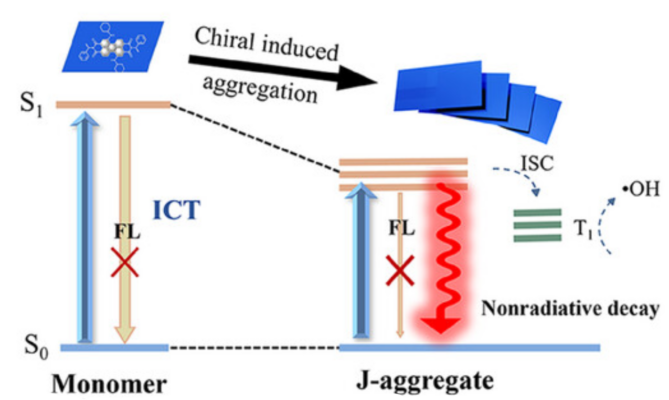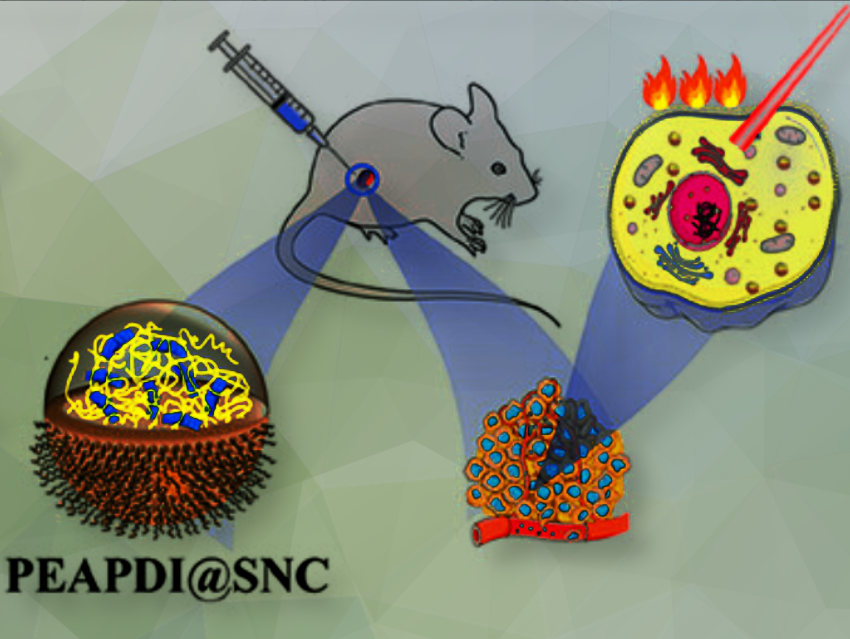The performance of small molecule organic photothermal agents (PTAs) in photothermal therapy (PTT) is often limited. High dosages, high light intensities, and long treatment times are generally required to kill tumor cells. This is mainly due to the low photothermal conversion efficiency (PCE) of these agents, especially in the biological window (near infrared (NIR), 700-1870 nm). PTAs with ultra-high PCEs activated by NIR laser irradiation can achieve effective tumor destruction with low-intensity laser exposure, improving safety and therapeutic outcomes. The PCE of organic molecules can be significantly improved by precise molecular design and optimized intermolecular interactions.
Xun Sun and Xuan Sun, Shandong University, Jinan, China, Xu Li, Agency for Science, Technology and Research (A*STAR), Singapore, and colleagues have developed a perylene diimide (PDI)-based PTA (called PEAPDI; N,N′-bis(1-phenylethyl)-dicyclohexyl-perylene-3,4,9,10-tetracarboxydiimide) with an impressive PCE of 89.6%. The molecule contains a electron-donating cyclohexylamine group at the bay positions of the PDI core to facilitate non-radiative transitions via intramolecular charge transfer. A chiral phenethylamine (PEA) group is introduced at the N-terminals to enhance intermolecular interactions through chiral recognition, promoting molecular aggregation. These modifications collectively enhance electronic absorption in the NIR region and result in excellent photothermal conversion.

The strong intermolecular interaction between the PDI skeletons induced by PEA together with the intramolecular charge transfer from cyclohexylamine to PDI skeleton severely quenches the fluorescence emission from PEAPDI and significantly enhances its NIR absorption, resulting in super NIR–photothermal conversion.

The PEAPDI molecules are further encapsulated in silica nanocapsules (SNC), creating PEAPDI@SNC, which has a small, monodisperse hydrodynamic diameter, along with colloidal stability and biocompatibility. These features extend blood circulation time and enhance tumor accumulation through the enhanced permeability and retention (EPR) effect. The hollow structure of the SNC allows high PDI loading, contributing to the remarkable PCE of 89.6% under 808 nm laser irradiation.
In vivo experiments using a 4T1 tumor-bearing mouse model showed highly effective tumor ablation with minimal side effects at low doses of PEAPDI@SNC combined with NIR laser treatment at 808 nm. The 4T1 tumor-bearing mouse model is a widely used breast cancer model in which 4T1 cells are injected into mice, leading to aggressive tumors that closely mimic human metastatic breast cancer.
These findings highlight according to the researchers PEAPDI@SNC as a promising candidate for photothermal therapy in cancer treatment.
- Chiral-induced highly efficient NIR–photothermal conversion of perylene diimide@silica nanocapsules for photothermal therapy,
Yue Zhao, Fuhao An, Jichao Wu, Haining Li, Xueyu Wang, Lanya Jiao, Ying Kong, Jinghan Zhu, Xun Sun, Xu Li, Miao Wang, Yu Zhang, Xuan Sun,
Aggregate. 2024.
https://doi.org/https://doi.org/10.1002/agt2.630




